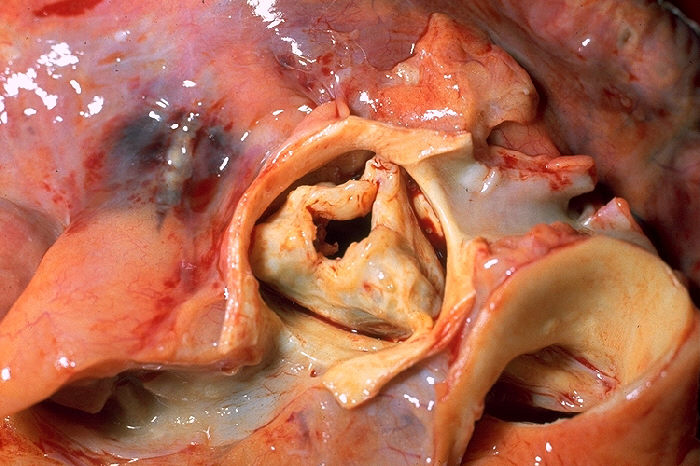Aortic stenosis is a cardiac condition characterized by the narrowing of the aortic valve opening, impeding the flow of blood from the left ventricle of the heart to the aorta. This narrowing hampers the heart's ability to pump blood efficiently throughout the body.
Definition:
Aortic stenosis is a progressive condition where the aortic valve becomes narrower over time, hindering the normal flow of blood.
Types:
There are primarily three types of aortic stenosis:
1. Congenital Aortic Stenosis: Present at birth, this type of stenosis is often caused by a malformed aortic valve.
2. Rheumatic Aortic Stenosis: A result of rheumatic fever, this type stems from scarring and fusion of the valve leaflets.
3. Degenerative Aortic Stenosis: Associated with aging, this type occurs due to calcification and thickening of the valve leaflets.
Signs and Symptoms:
The signs and symptoms of aortic stenosis may include:
- Chest pain or tightness
- Shortness of breath, especially during exertion
- Fatigue
- Dizziness or fainting spells
- Heart palpitations
- Heart murmur, detectable by a healthcare professional during a physical examination
Cause or Causative Agents:
The primary causes of aortic stenosis include congenital defects, rheumatic fever, and age-related degeneration. Additionally, risk factors such as hypertension, hypercholesterolemia, and smoking can exacerbate the condition.
Prevention:
While congenital and rheumatic causes may not be preventable, adopting a healthy lifestyle can mitigate the risk of developing degenerative aortic stenosis. This includes maintaining a balanced diet, regular exercise, managing blood pressure and cholesterol levels, and avoiding smoking.
Control:
Regular medical check-ups and early detection play a crucial role in controlling aortic stenosis. Monitoring risk factors and adhering to prescribed medications can help manage symptoms and slow disease progression.
Treatment:
Treatment options for aortic stenosis depend on the severity of the condition and may include medication or surgical intervention.
- Medication: Drugs such as beta-blockers or calcium channel blockers may be prescribed to alleviate symptoms and improve heart function.
- Surgical Intervention: In cases of severe aortic stenosis, surgical procedures like aortic valve replacement or balloon valvuloplasty may be necessary to restore proper blood flow and alleviate symptoms.
In conclusion, aortic stenosis poses a significant threat to cardiovascular health, but with early detection, lifestyle modifications, and appropriate medical intervention, its impact can be mitigated, ensuring a better quality of life for affected individuals.

